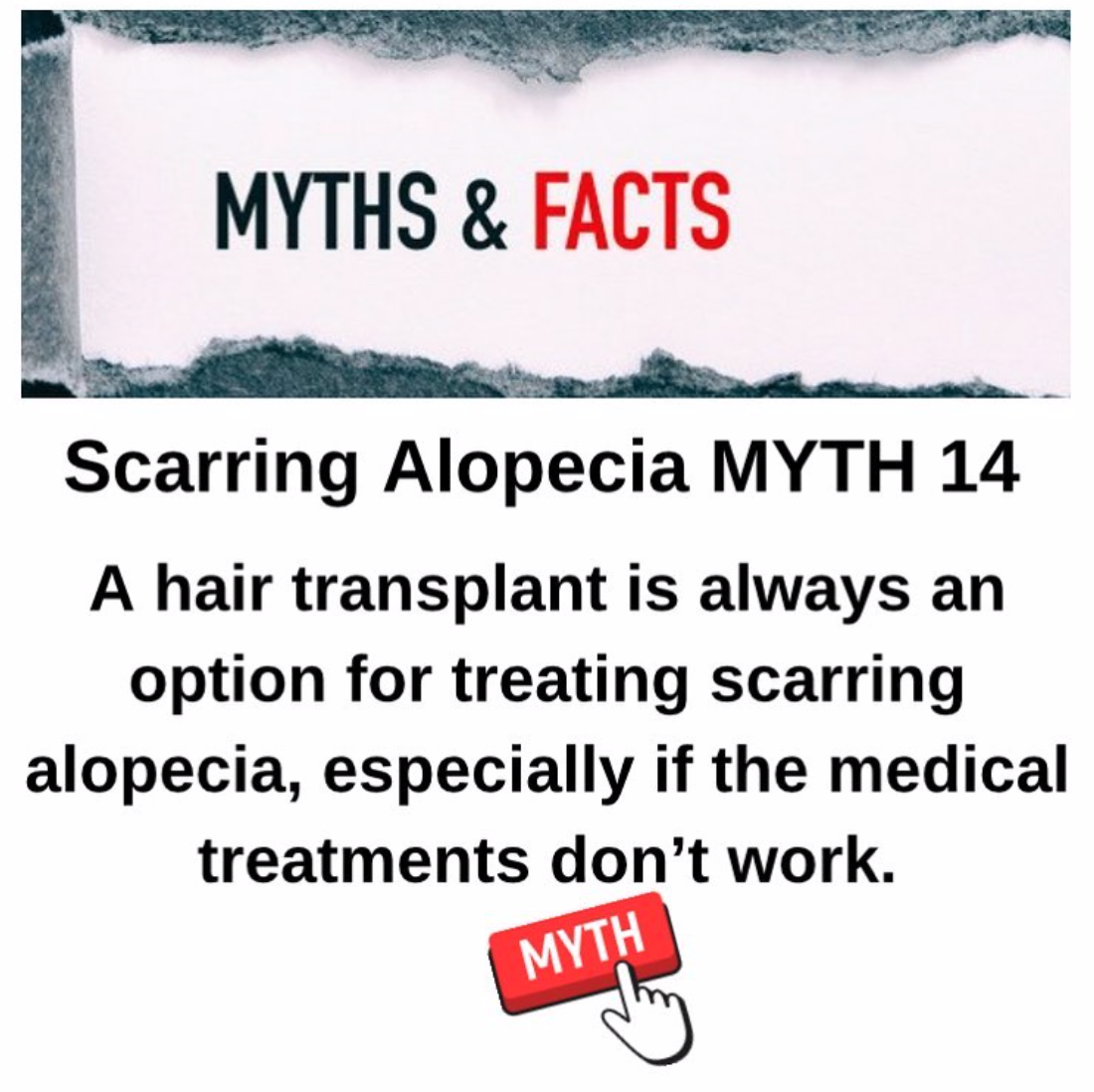National Scarring Alopecia Awareness Month (Day 29, Myth 14). Are Hair Transplants a Good Idea for Patients with Scarring Alopecia?
For The Appropriately Selected Patient with Burnt Out Disease, A Hair Transplant Could be A Good Plan
A hair transplant is always an option for treating scarring alopecia, especially if medical treatments don’t work.
Let me begin by saying that hair transplants for scarring alopecia can sometimes be a good idea. Some patients have very nice results. It can be life changing.
But it can sometimes be a bad idea. The decision ranges from being a good idea to being an okay idea to being a bad idea to a very bad idea depending on the clinical information of the patient and the current disease activity. Sometimes a hair transplant works out really well and patients are pleased with the outcome, but sometimes it does not work out well at all. Sometimes, a hair transplant actually even worsens things such that a patient would have been much more satisfied if they never had a hair transplant in the first place.
I know this doesn’t get talked about alot. And so I’m talking about it today.
A hair transplant is never a fantastic option for scarring alopecia. A patient with scarring alopecia is never an excellent candidate for surgery. Don’t be mistaken though - a hair transplant can sometimes be a good option and a patient can be a good candidate for surgery. But “good” and “fantastic” are very different. A fantastic or excellent option would mean that surgery is guaranteed to work great and transplanted hairs will last forever and ever and someone can just be done with all the medical treatments. No, having a transplant does not come with these types of guarantees. I wish it did, but it does not.
A more balanced view is appropriate. If a patient or physician thinks that hair transplants are just a perfect option for scarring alopecia, you haven’t seen or heard enough complications.
A patient with scarring alopecia can only undergo a hair transplant if they meet a few basic criteria. They need to a) have inactive disease for ideally two years or more before undergoing a transplant b) understand that the transplant may or may not work out successfully c) understand that the transplant may work out incredibly well after 1 year or even at the 2 or 5 year mark but then some or all of the grafts might be lost in years beyond that d) be prepared for the possibility of a “flare” or worsening of disease after the transplant and have a dermatologist on board to step in to improve the odds to quickly stop the flare.
A hair transplant is most certainly on the list of treatments for inactive burnt out scarring alopecia. Don’t misconstrue this post in any other way. But it’s only an option for the well informed patient who has long standing inactive disease who works with a hair transplant surgeon with experience transplanting scarring alopecia. Rushing into a hair transplant while the disease is active is likely to lead to problems.
This article was written by Dr. Jeff Donovan, a Canadian and US board certified dermatologist specializing exclusively in hair loss.

